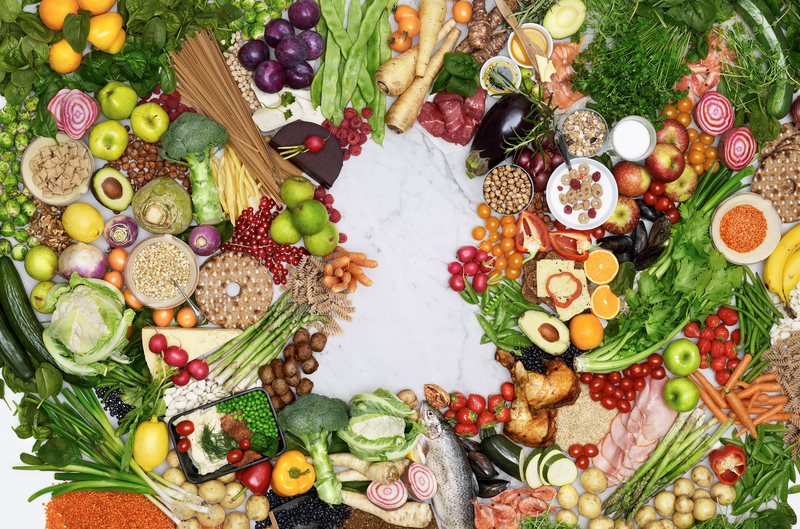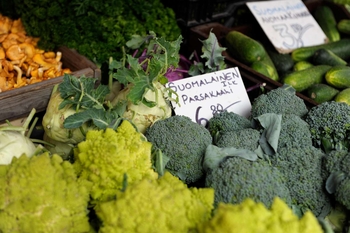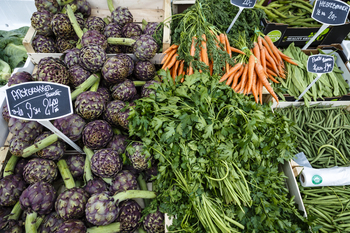New guidelines make the Keyhole even greener

The popular labelling scheme, based on the Nordic Nutrition Recommendations, is the result of a successful project launched in 2007 to help people eat more healthily. The Keyhole is a positive symbol – instead of telling consumers what not to eat, it helps them to choose healthier options within product groups.
More than 4,000 products carry the Keyhole, and awareness of it as a credible label is very high among consumers. As well as providing guidance to consumers, the label also encourages healthy product development in the Nordic countries.
Better products in shopping baskets
The Keyhole is an independent label and is free to use by products that meet its criteria. The point of the new regulations is that official agencies in the Nordic countries want to encourage even more people to put healthier food in their shopping baskets.
“We hope to lower the threshold for producers to use the label, but without relaxing the requirements. We also want to increase awareness of the Keyhole among even more consumers, especially younger people, to help them eat a varied diet and develop better eating habits. Regardless of whether you shop online or in store, the Keyhole acts as a simple compass in a hectic everyday,” says Henriette Øien, Head of Department at the Norwegian Directorate of Health and chair of the Nordic working group.
More vegetarian and plant-based products
Here are some of the most important changes and new rules:
- The Keyhole is based on product development and consumer demand. The new rules pave the way for more vegetarian and plant-based products to qualify for the label. This will make the Keyhole more relevant to more consumers.
- It will be easier to find products with the Keyhole label. Popular and healthy foods that were previously ineligible for the Keyhole because they did not meet the requirements for portion size or fit into any of the existing categories will now be eligible. The new changes mean more products will be able to use the Keyhole, and make it easier to follow the health agencies’ dietary recommendations.
- Keyhole products encourage purchases of whole grains, vegetables and legumes. The new rules enable products in the food categories flour, grains, porridge, bread and pasta to replace some of the grain in them with vegetables and legumes. Whole grains, vegetables and legumes can now also replace parts of the meat in meat products.
- In certain categories (ready meals), the requirements for the amount of saturated fat have changed from an energy percentage to content per 100 g. This makes it easier to follow the rules during the product development stage.
- Producers who use the Keyhole on their products can be proud of their contribution to better public health by making it easier for consumers to make good food choices. At the same time, the label shows that the company has a social conscience.
- From 1 March 2021, the symbol will not be followed by ®. Products may be labelled with ® until 1 September 2024 and stocks can still be sold after that.
About the Keyhole
The Keyhole symbol makes it easy for people to choose healthier options in food groups, and put together a healthy and varied diet in line with official dietary advice. A product that carries the Keyhole label is a healthier option within its food group.
The aim is to encourage the food industry to develop more products with less fat, healthier fatty acid composition, less salt and sugar, and more dietary fibres, whole grains, vegetables and fruit.
Facts aboutthe Keyhole
- The Keyhole label designates healthier alternatives within a product group.
- To be eligible for the Keyhole, a food product must contain less salt and sugar, less or healthier fat, and more whole grains and fibres than comparable products.
- The Keyhole is found on bread, grains, dairy products, oil and ready meals, among other things.
- All fresh fruit, vegetables, fish and lean meats can qualify to use the Keyhole.
- Labelling with the Keyhole is free and voluntary.
- The producer of the food product in question is responsible for following the rules.
For more information about the Keyhole and the new requirements, see the national websites:
A similar system is used in Finland, with a heart symbol instead of the Keyhole. This symbol was launched by the Finnish Heart Association and the Finnish Diabetes Association. More information here. (sydanmerkki.fi)


